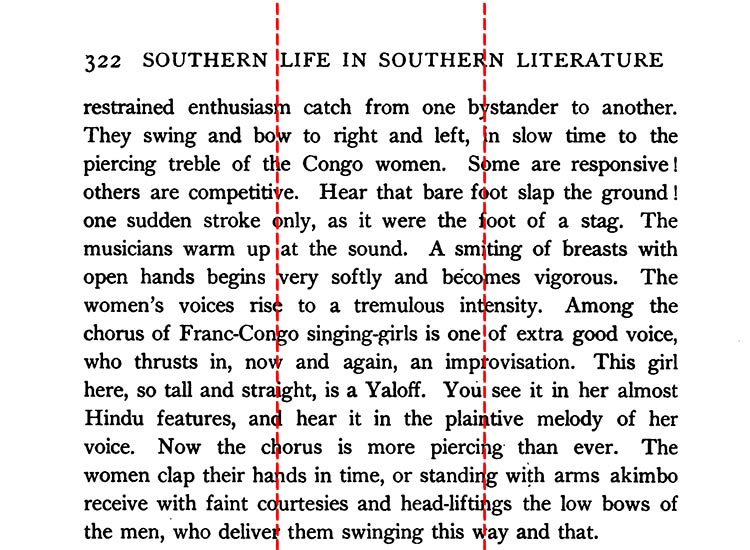Reading skills
Improving your reading skills will help you reduce your reading time, enable you to read in a more focused and selective way and increase your levels of understanding.
Apply your reading skills
You already use a range of reading styles in everyday situations. For example:
-
When reading a novel you might read in detail, focusing on every word from start to finish.
-
While reading a magazine or your social media feed you might flick/scroll through to see what is of interest.
-
When you search online for a specific topic you purposefully ignore all other topics and focus your attention on spotting the topic you want.
These everyday reading skills can be applied to your studies.

Reading strategy tips:
Reading goals
Clear reading goals can significantly increase your reading efficiency. Use reading goals to select and prioritise information according to the task in hand.
Reading goals can be:
- An essay or seminar subject
- A report brief
- A selected subject area
- A series of questions about a specific topic
Use your reading goals to help you identify the information that is relevant to your current task.

Create clear reading goals to increase your reading efficiency.
Choosing a text
What to read?
The specific content that you are required to read for your course is listed in your course outlines. This list often includes textbooks and articles, etc. You will also see recommended reading lists attached to different topics.
Finding more resources
In the library there are a large collection of resources containing a wide range of subjects and these will be arranged in categories according to programme and context. Many academic journals are available on-line. The Robertson Library also has Subject Guides, which list databases and other resources by subject area.
Assess the resource
When choosing a text you will need to assess the text to see if it contains information that is relevant to your reading goals:
-
Check the date of publication. Is the information up-to-date?
-
Check the author. Do you know who has written it? Are they an authority in this field?
-
Is the source sufficiently academic for your course?
-
Check the relevancy. For instance, do you need a New Zealand focus?
Once you have selected a text you can use the following techniques of scanning and skimming to help you identify areas for detailed reading.
If the text doesn't seem relevant, discard it.
Scanning and skimming
Scanning
Scanning is the technique you might use when searching online. You pass your vision quickly over a section of text in order to find particular words or phrases that are relevant to your current task.
You can scan:
- The introduction or preface of a text
- The first or last paragraphs of text
- The concluding or summarising chapter of a text
- The book index
Skimming
Skimming is the process of speedy reading for general meaning. Let your eyes skip over sentences or phrases which contain detail. Concentrate on identifying the central or main points.
Use this technique to:
- Pre-view a selection of text prior to detailed reading
- Refresh your understanding of a selection of text following detailed reading
Detailed reading and note taking
Once you have selected useful information, you can begin to read in detail. Note-taking techniques provide a useful aid to reading.
Detailed reading
Use these techniques when taking notes:
Pick out what seem to you the most central or important words and phrases and highlight or underline them.
Do this in your own copy of texts or on photocopies - never on borrowed texts.
Record the main headings as you read as keywords, then use one or two keywords for each main point.
Keywords can be used when you don't want to mark the text.
Record your questions about the content as you read. Questions encourage you to take an active approach to your reading.
Questions can also be used as prompts for follow up work.
Pause after a section of text and put what you have read in your own words. Summaries check you have understood what you have read.
Skim over the text to check the accuracy of your summary, filling in any significant gaps.
These techniques encourage an active engagement with the text as well as providing you with a useful record of your reading.
Avoid passively reading large amounts of text as it is not an effective use of your time. Always use a note taking technique to increase your levels of concentration and understanding.
-
Tips for reading text
-
Read an entire section first
-
Do not underline too much
-
Select information you want to learn to make into notes
-
Make major points stand out clearly. Use numbers; double underlining; stars
-
Make notes in the margins. Use key words, brief summaries and write questions if you do not understand something, so you can return to that section
-
Realise that introductions rarely contain material that needs to be underlined
-
Turn major headings and sub-headings into questions
-
Use brackets when several lines are important to underline
-
Use numbers when a series of ideas are important
-
Place a question mark beside unclear sections of information
-
Write down questions that you have for the teacher in your class notebook
Reading technique - SQ3R
One of the most effective reading techniques is known as SQ3R (Survey, Question, Read, Recite, Review).
SQ3R is designed to help you read faster and retain more. It might seem like it takes more time to use the SQ3R method, but once you master the process you'll find you will remember more and have to reread less often.
Increasing your reading speed
Being focused and selective in your reading habits will reduce the time you spend reading but there are also some techniques you can use which will help you increase your reading speed.
The average reading speed is about 240-300 words per minute. For the average reader, the eye fixes on each word individually. Your eye can learn to recognise four or five words in a single 'fixation' without a loss of understanding. The key to increasing your reading speed is not to increase the speed at which your eyes move across the page, but to increase the word span for a single fixation.
Divide the page
A simple way of developing the habit of taking in more than one word per fixation is to divide the page into thirds.
-
Take a page of text and divide it length ways into three with two lines drawn down the page
-
Use a pen or pencil as a pointer to each section
-
Read each line of text by allowing your eye to fall only in the middle of each of the three sections, as indicated by your pointer.

Developing your reading speed
-
Don't worry about how quickly you are reading but instead, concentrate on reading the line in only three fixations
-
As this becomes more natural, practise without drawing lines
-
Later, reduce the number of fixations to two per line
-
Once this increased word span becomes a comfortable habit, an increase in your reading speed will occur.
Practise tool
AcceleReader is a productivity tool which allows you to practise your reading speed skills with your own texts.
The following video suggests 5 methods to increase the speed of your reading.
References
Attributions
Hero image: Abstract artwork by Dan Gold. Licensed under a Pexels.com license.





